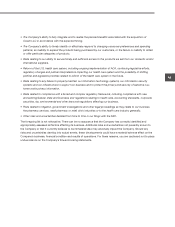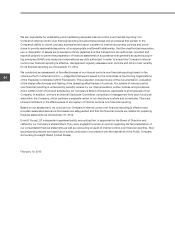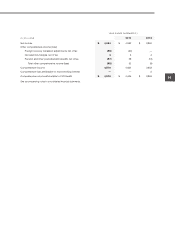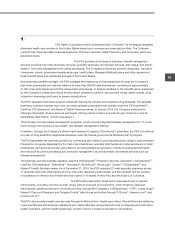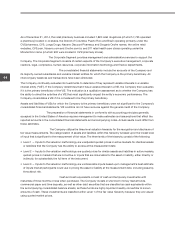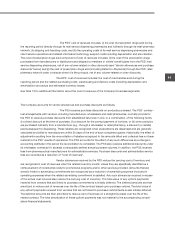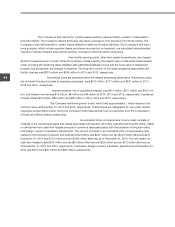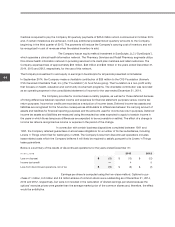CVS 2014 Annual Report Download - page 60
Download and view the complete annual report
Please find page 60 of the 2014 CVS annual report below. You can navigate through the pages in the report by either clicking on the pages listed below, or by using the keyword search tool below to find specific information within the annual report.
CVS Health
58
Notes to Consolidated Financial Statements
As of December 31, 2014, the retail pharmacy business included 7,822 retail drugstores (of which 7,765 operated
a pharmacy) located in 44 states, the District of Columbia, Puerto Rico and Brazil operating primarily under the
CVS/pharmacy, CVS, Longs Drugs, Navarro Discount Pharmacy and Drogaria Onofre names, the online retail
websites, CVS.com, Navarro.com and Onofre.com.br, and 971 retail health care clinics operating under the
MinuteClinic name (of which 963 were located in CVS/pharmacy stores).
Corporate Segment —
The Corporate Segment provides management and administrative services to support the
Company. The Corporate Segment consists of certain aspects of the Company’s executive management, corporate
relations, legal, compliance, human resources, corporate information technology and finance departments.
Principles of consolidation — The consolidated financial statements include the accounts of the Company and
its majority-owned subsidiaries and variable interest entities for which the Company is the primary beneficiary. All
intercompany balances and transactions have been eliminated.
The Company continually evaluates its investments to determine if they represent variable interests in a variable
interest entity (“VIE”). If the Company determines that it has a variable interest in a VIE, the Company then evaluates
if it is the primary beneficiary of the VIE. The evaluation is a qualitative assessment as to whether the Company has
the ability to direct the activities of a VIE that most significantly impact the entity’s economic performance. The
Company consolidates a VIE if it is considered to be the primary beneficiary.
Assets and liabilities of VIEs for which the Company is the primary beneficiary were not significant to the Company’s
consolidated financial statements. VIE creditors do not have recourse against the general credit of the Company.
Use of estimates — The preparation of financial statements in conformity with accounting principles generally
accepted in the United States of America requires management to make estimates and assumptions that affect the
reported amounts in the consolidated financial statements and accompanying notes. Actual results could differ from
those estimates.
Fair value hierarchy — The Company utilizes the three-level valuation hierarchy for the recognition and disclosure of
fair value measurements. The categorization of assets and liabilities within this hierarchy is based upon the lowest level
of input that is significant to the measurement of fair value. The three levels of the hierarchy consist of the following:
• Level 1 — Inputs to the valuation methodology are unadjusted quoted prices in active markets for identical assets
or liabilities that the Company has the ability to access at the measurement date.
• Level 2 — Inputs to the valuation methodology are quoted prices for similar assets and liabilities in active markets,
quoted prices in markets that are not active or inputs that are observable for the asset or liability, either directly or
indirectly, for substantially the full term of the instrument.
• Level 3 — Inputs to the valuation methodology are unobservable inputs based upon management’s best estimate
of inputs market participants could use in pricing the asset or liability at the measurement date, including assump-
tions about risk.
Cash and cash equivalents — Cash and cash equivalents consist of cash and temporary investments with
maturities of three months or less when purchased. The Company invests in short-term money market funds,
commercial paper and time deposits, as well as other debt securities that are classified as cash equivalents within
the accompanying consolidated balance sheets, as these funds are highly liquid and readily convertible to known
amounts of cash. These investments are classified within Level 1 of the fair value hierarchy because they are valued
using quoted market prices.



